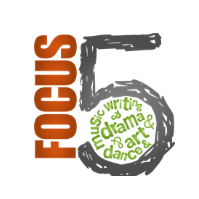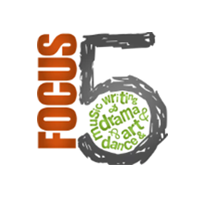Instructional Strategies: Visual Art
These workshops focus on visual arts-based strategies that can be integrated in multiple curricular areas.
Reading Art Across the Curriculum
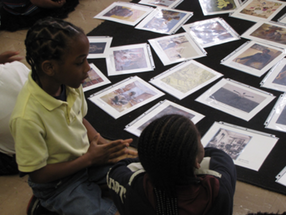
FOR TEACHERS OF GRADES K-2, 3-5, OR SECONDARY
LENGTH: 3-12 HOURS
(This can be offered as a workshop or a course. The number of sessions can be modified. Each workshop session is typically 2-3 hours in length. Course sessions extend to focus specifically on social studies, science, reading, and/or writing along with how to find and select art and facilitate deeper discussions about works of art.)
Visual art is a text that students of all reading abilities can access. This workshop introduces the language of visual art so that teachers feel confident looking, thinking, and talking about art with their students. Learn about resources for building a library of images that can be used to efficiently build background knowledge, teach content, generate points of inquiry for research, and assess understandings in social studies, science, and reading.
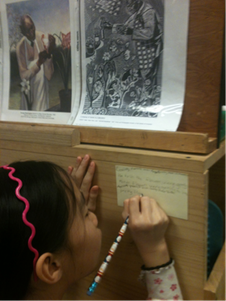
Reading Portraits as Biographies
For Teachers of Grades K-2, 3-5, Secondary history and/or ELA teachers
(This can be offered as a workshop of a course. The number of sessions can be modified. Each workshop session is typically 3 hours in length. Course sessions extend to students creating their own portraits through printmaking and writing poetry to deepen and assess student understandings.)
There’s more to a portrait than you might think. Portraits are often viewed as a mere depiction of a person when in actuality they can be read as biographies that communicate significant information about a person’s life. This workshop examines ways to teach students to view portraits as a visual text filled with meaningful symbolism in order to make the study of people and biographies more engaging. Reading portraits helps activate and build background knowledge, construct understanding, and reflect on historical and literary figures across the curriculum.
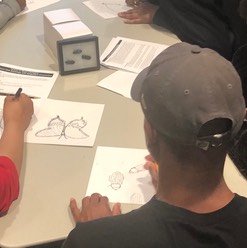
Think Like a Scientist: Observational Drawing
For Grades 3-12
Length: 3-6 hours
This workshop is led by Jamin Carter
Scientists, engineers, architects and many other professionals rely on observational drawing in order to record and communicate important data. This workshop engages teachers in a strategy that teaches students how to carefully observe and draw an object from nature in order to develop a robust and detailed understanding of its attributes, patterns, and functions. Far from a method reserved for gifted artists, scientific observational drawing can be learned by all students just by practicing a few skills and habits. Join us as we go from STEM to STEAM!.
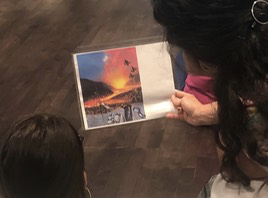
Think Like a Scientist: Developing Science Practices Through Visual Art
For Grades 2-8 Science Teachers
Length: 3-6 hours
In this workshop, learn how to view the scientific world through the eyes of an artist! Explore ways to help students read visual art to develop their use of several science practices, such as careful observation, analyzing and interpreting data, and developing an explanation based on evidence. The elements of art are used to effectively teach the skills of observing and describing so that scientific conclusions and explanations become even more detailed. You don’t want to miss this opportunity to learn an engaging process that takes you from STEM to STEAM!

Image to Inquiry: Reading Art in the Secondary Social Studies Classroom
For Grades 6-12
Length: 3-12 Hours
(This can be offered as a workshop or a course. The number of sessions can be modified. Each workshop session is typically 2-3 hours in length.)
It can be difficult for students to comprehend social studies curriculum because the people, places, and events feel so far removed from their own lives—they have trouble relating. Often what's missing is the background knowledge to create a meaningful connection to the content. Works of art are visual texts that students of all reading abilities can access. These secondary sources can be read to visually connect students to the content while efficiently building background. Once students have this connection they easily and quickly develop questions and motivation to actively engage in research and ownership of what they learn.
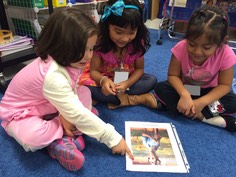
Reading and Talking about Visual Art in the Early Childhood Classroom
For Teachers of Grades K-2
Length: 3 -12 Hours
(This can be offered as a workshop or a course. The number of sessions can be modified. Each workshop session is typically 2-3 hours in length.)
Students in grades K-2 are often emerging readers who are depending on images to provide visual cues to aide in comprehension. This workshop focuses on looking and talking about illustrations in fiction picture books before, during, and after reading to help students develop the skills of prediction, inference/drawing conclusions, sequence, and retelling a story.
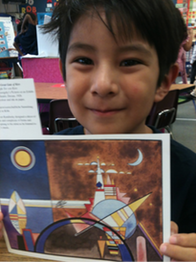
Lines and Shapes: Integrating Visual Art and Geometry
FOR TEACHERS AND MATH SPECIALISTS of GRADES Pre-2
LENGTH: 3 HOURS
Lines and shapes, concepts central to pre K-2nd grade mathematical understanding, are also building blocks of visual art. In this workshop, explore how students can construct and demonstrate their understanding of geometry through visual art. Teachers learn the basic vocabulary for identifying and describing various types of lines and 2-D shapes in works of art and create abstract drawings and cut-paper compositions that allow all types of learners to be creative and successful.
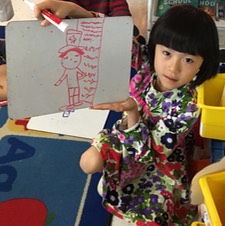
Let’s Write Like Artists! Drawing as Prewriting
Grades PreK-2
Length: 3 hours
Pre-emerging and emerging writers often draw pictures to communicate. In this workshop, learn how the most basic element of art--lines—can help your students draw more descriptively. First, learn the vocabulary for helping students identify and describe various types of line in works of art. Those skills are then applied to create more realistic figures in their own prewriting drawings. This workshop allows all types of learners to be creative and begin to write like artists!
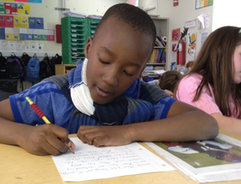
Looking the Write Way: Visual Art and Poetry Throughout the Curriculum
For Teachers of Grades 2-8
This can be offered as a six hour workshop, a four session course, or a three day institute.
Each workshop session is typically 3 hours in length.
Teachers working in today’s schools face a tremendous challenge: successfully engaging and motivating a classroom full of students with diverse backgrounds and abilities, with the pressures of standardized tests always looming on the horizon. This three-day institute has been developed to help teachers succeed in meeting that challenge through the creative power of visual arts and poetry.
In this workshop, participants are guided through a process to analyze art that teaches students the critical skills of observing, inferring, inquiring, and writing. This analysis becomes a springboard for writing as students discover there is so much to write about when they slow down and discover the power of observation. The work of art is ultimately synthesized as students use descriptive, carefully chosen words and various poetry tools to create vivid images that express thoughts and feelings through poetry.
Armed with this process of how to read art and respond through poetry, this strategy can be integrated throughout the curriculum to build background knowledge, teach content, generate points of inquiry for research, and assess understandings in social studies, science, and literature.The number of sessions can be modified.
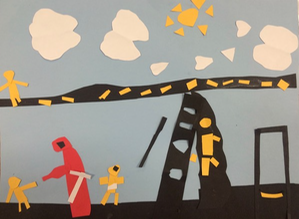
Cut Paper: A Pathway to Creative Writing
For Teachers of Grades 2-12
Length: 3 Hours
This workshop is led by Jamin Carter
The process of writing stories can be challenging for young authors. In this workshop, explore how students can use scissors, glue, and construction paper to create artwork that becomes the bridge between an unformed idea and a unique, descriptive story. Learn to use selected elements of art, such as shape, color, and space, to connect to story components (e.g., character, setting, events, main idea, and details). Participants will leave with workable, accessible tools for students to create ideas, think divergently and write creatively.

Making it Stick: Cut Paper, Drawing and Memory
For Teachers of Grades 3-12
Length: 3 Hours
This workshop is led by Jamin Carter
Memory is a powerful tool that can be enhanced through visual art. In this workshop experience how students can develop their own language of symbols that aid them in understanding, communicating and remembering important information. Based in drawing and cut paper strategies, students will be empowered to heighten their vocabulary, reading comprehension, brainstorming skills, and more.
